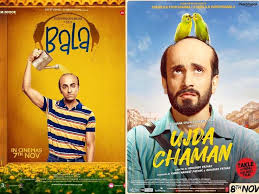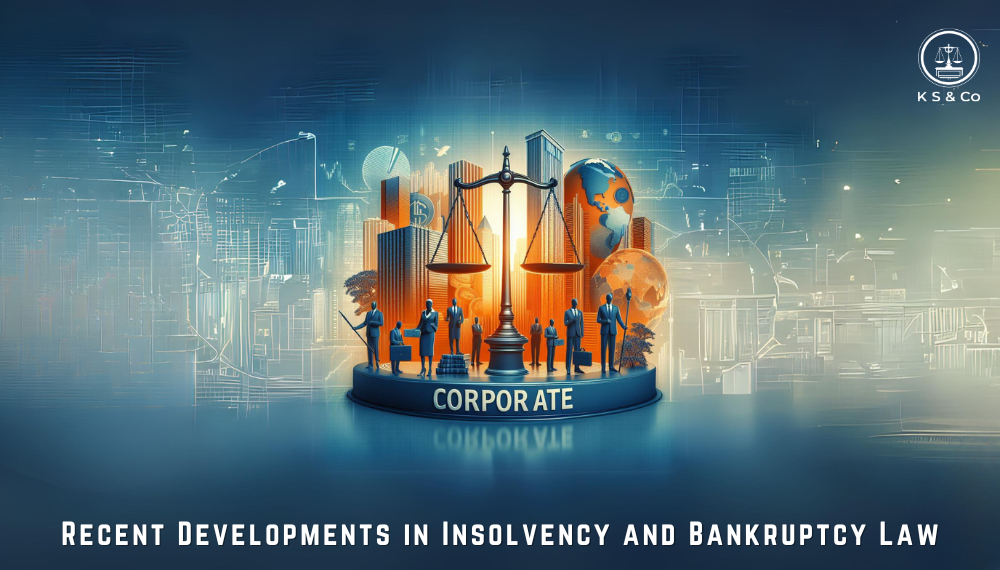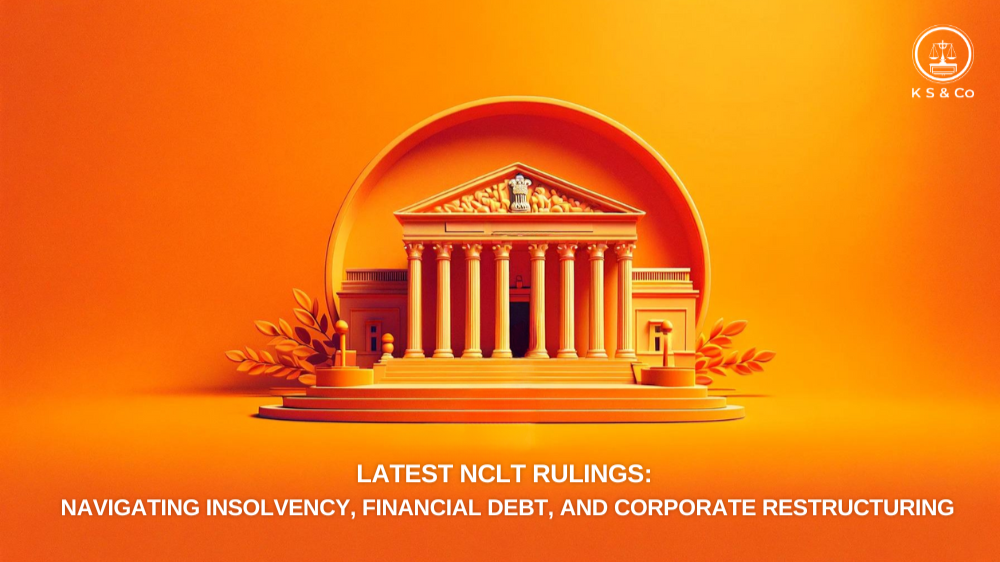The contours of originality under the Indian copyright law will be put to test again as the two popular Bollywood movies, Ayushmann Khurrana’s “Bala” and Abhishek Mangat’s “Ujda Chaman”, propose to enter into a legal battle. The makers of the movie Ujda Chaman have alleged that the creators of the movie Bala have infringed their copyright as they not only spotted numerous similarities in the trailers of the two movie trailers but also found that even the dialogues and screenplay were similar. Upon learning about the similarities of the two movies, the makers of Ujda Chaman issued a public notice to the makers of Bala only to be assured that the movies were different. The producers of Bala stand firm by its originality and claim that having multiple films revolving around the same theme will only provide a variety to the viewers and cannot be said to be a bad thing. The answer to whether Bala infringes upon the copyrights of Ujda Chaman remains to be seen.
In the light of the above controversy, we discuss the requirement of originality with respect to cinematograph films under the Copyright Act, 1957 (“Act”). Copyright protection is only granted if the work is original and originates from the author, it cannot be granted if the work is a copy or a duplication of another person’s work. This raises the question if copyright infringement with respect to cinematograph film is only possible when an exact copy is made by a process of duplication or if the originality test laid down in R.G. Anand v. M/s Deluxe Films and Ors. is applicable?
Originality of cinematograph films
The issue of originality with respect to cinematograph films was raised in the case of MRF Limited v. Metro Tyres Limited , wherein the issue before the Delhi High Court was whether copyright infringement is only limited to making a physical copy of the film or does it extend to replicating the substantial, essential and fundamental aspects of a film. It is questionable because the Act does not make an explicit mention of originality as a pre-requisite for granting protection of copyright for a ‘cinematograph film’. Section 13(1)(a) of the Act explicitly mentions the requirement of originality for the protection of ‘artistic works’ which is not the case with ‘cinematograph films’ under Section 13(1)(b). Further, there is no mention of originality in the definition of ‘cinematograph film’ under Section 2(f) of the Act. In the present case, the plaintiff’s advertisement had been alleged to have been copied by a rival company. The plaintiff relied on the test of originality as was provided under R.G. Anand v. M/s Deluxe Films and Ors. to prove their case. The defendant contended that ‘cinematograph film’ was to be treated differently under Section 13(3) of the Act and all the underlying aspects of the work were protected independently and not as a whole. The defendant further contended that a conjoint reading of Sections 2(m)(ii), 14(d)(i) and 51 of the Act made it clear that copyright infringement occurred only when there was a duplication of the work, specifically when a physical copy was made.
The Delhi High Court opted for a harmonious construction between Section 14 of the Act and Article 14 bis of the Berne Convention that grants additional copyright protection to cinematograph work and to which India is a signatory. The Court opined that under Section 14(d)(i) of the Act, the word “copy” is not limited to making a physical copy that is a complete duplication or replication of the film but also covers instances of infringement wherein the whole or part of the film is stolen, hence the same standards of originality as propounded in R.G. Anand V. M/s Deluxe Films and Ors. will be applicable to cinematograph films as well.
This decision was reiterated in the case of Yash Raj Films Pvt. Ltd. v. Sri Sai Ganesh Productions & Ors. where the defendant was alleged to have made a copy of the Bollywood movie, Band Baaja Baarat, by dumbing and releasing the same as a Telugu movie, Jabardasht. It was alleged that there were substantial and material similarities in terms of theme, concept, plot, character, sketches, story, script etc. Relying on the test laid down in R.G. Anand v. M/s Deluxe Films and Ors. , the Delhi High Court held once again that one needs to look into the “the substance, the foundation, the kernel” of the two works and determine whether an average consumer would be confused while determining whether a substantial part has been copied or not.
Test of originality
The present test of originality arose in the case of R.G. Anand v. M/s Deluxe Films and Ors .where the defendants were alleged to have infringed the copyright of the plaintiff by making the film ‘New Delhi’ based on the plaintiff’s play ‘Hum Hindustani’. In this case, the Apex Court compared the original and subsequent work by considering the arrangement of facts, the manner of writing, and whether if it is a copy from scene to scene or if the state of affair are extremely similar with miniscule changes. The Court believed that the new work must “infuse a new light to the idea” to the prior work that was used as reference, and there must be difference in the style of writing and the arrangements of the situations. The Court also held that there can be no copyright protection for “ideas, plots, legendary facts and themes” and it is only the expression of the idea that is granted protection under copyright. This case laid down the lay observer’s test which stated that there should be substantial resemblance between the original work and the alleged copy, in terms of scenes, incidents and treatment, and the similarity must be such that the reader, spectator or the viewer after having read or seen both the works is clearly of the opinion and gets an unmistakable impression that the subsequent work appears to be a copy of the original. The Court also observed that where the theme is the same but is presented and treated differently than the subsequent work becomes a completely new work. One needs to also look at the similarities and dissimilarities between the two works to see if the dissimilarities negate the intention to copy the original and if the similarities are material or merely coincidental and incidental. The test of originality was further explained in the case of Eastern Book Company &Ors. V. D.B. Modak and Another .The Apex Court when deciding the upon the threshold of originality, that must be applicable in India, took into consideration the standards applicable in different jurisdictions of the world such as the U.K, where the threshold is that “sweat and brow”, and the USA where “modicum of creativity” is the threshold for determining originality. The Apex Court took a middle ground and held that the test of originality adopted in India entails “minimum flavour of creativity” coupled with labour, skill and judgment. This does not mean the work needs to be novel or non-obvious for the purpose of being creative, but the creativity must not be so not be so trivial or minimal that it may seem mechanical.
Scène à Faire
In order to determine if two cinematographs infringe upon the copyright of each other, it is also important to understand the doctrine of scène à faire. It is a concept under copyright law which emerges from the idea-expression merger doctrine and states that certain scenes or elements are not protected under copyright law as there are mandatory or customary to a particular genre. For instance, in the case of Cain v. Universal Pictures Co. the Court held that the idea of a couple spending an idyllic night in the Church because of rain was not protectable as it was mandated by the theme. In the case of Alexander v. Hayley , scène à faire was defined as “incidents, characteristics or settings which are practical matter indispensable or at least standard, in the treatment of a given topic” and thus are not protectable. This concept was also explained in the case of R.G. Anand V. M/s Deluxe Films and Ors , where a clear distinction was made between ideas and expression and it was observed that when the work is based on the same situation there will be similarity in the treatment and development of the plot. To constitute an infringement it should be shown that there was copying of someone else’s work that led to improper appropriation. In that particular case, both the works were based on the idea of provincialism and as this idea mandated certain scenes both the works were held to be independent creations. Thus, this doctrine tries to draw a balance between the author’s freedom of expression and the author’s copyright.
Conclusion
For a cinematograph film to be protected under copyright it needs to be original which means that it cannot be a copy of the substantial, essential and fundamental aspects of another film. The film needs to have a minimum degree of creativity. However, it is also important to note that scenes or elements that are inherent to the expression of a particular idea, theme or plot cannot be protected under the copyright law. It will be interesting to see if the makers of the movie Bala can take the defence of scène à faire or it can be argued that both the movies have the same idea or theme but their expressions are different.
Authors:
Srishti Singhania, Senior Associate, Singhania & Co.
Mehr Sidhu, 5th year student of Jindal Global Law School
This article has been published on Monday on 21st October 2019






